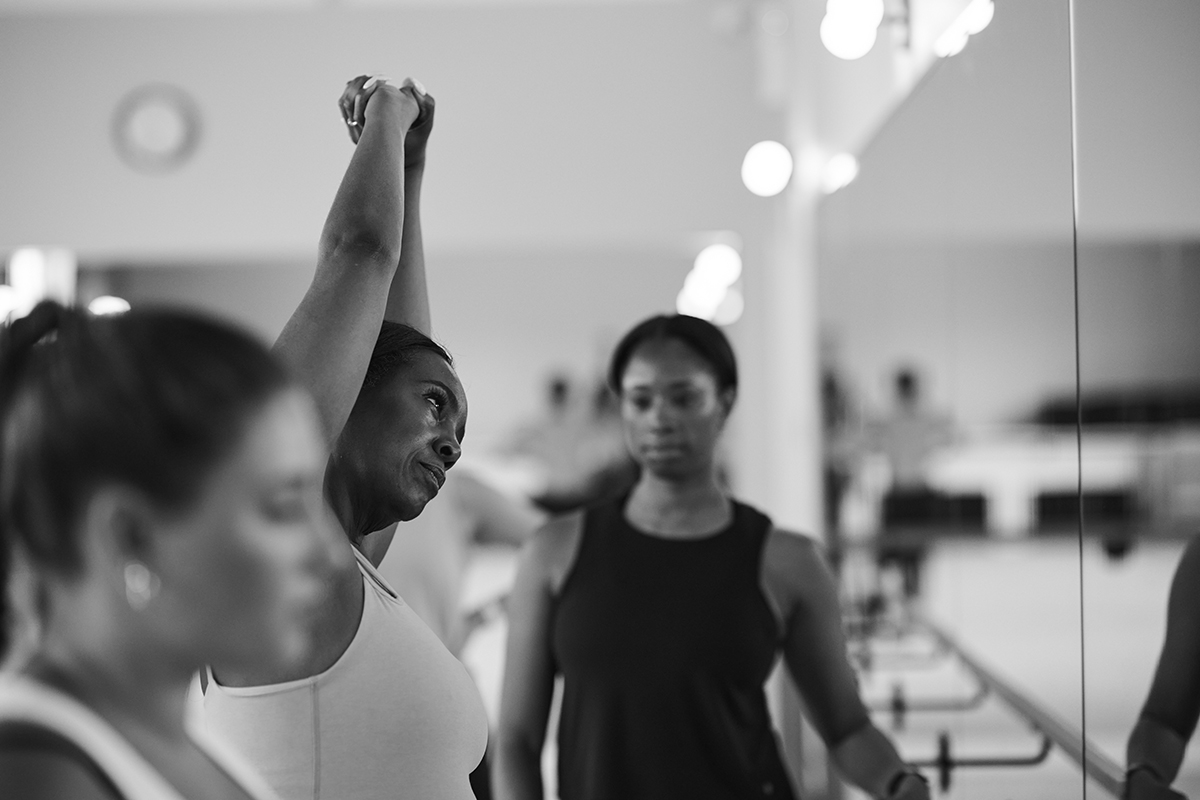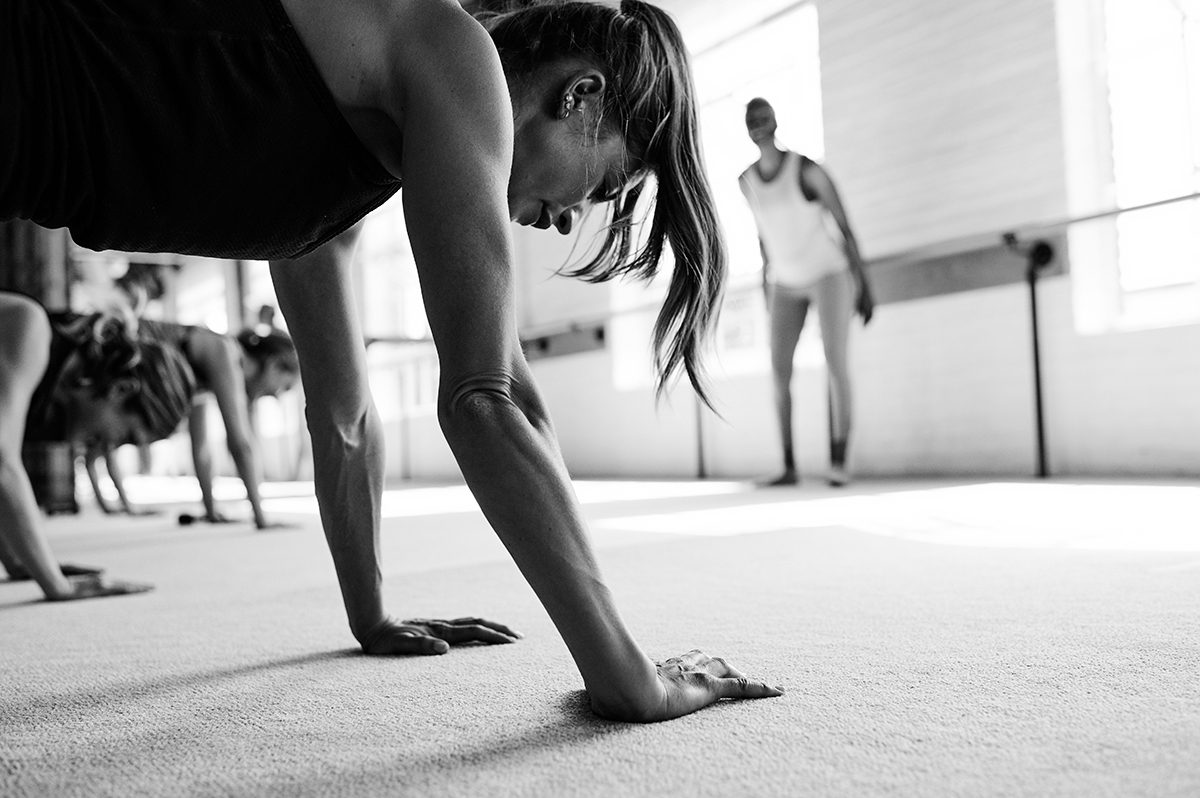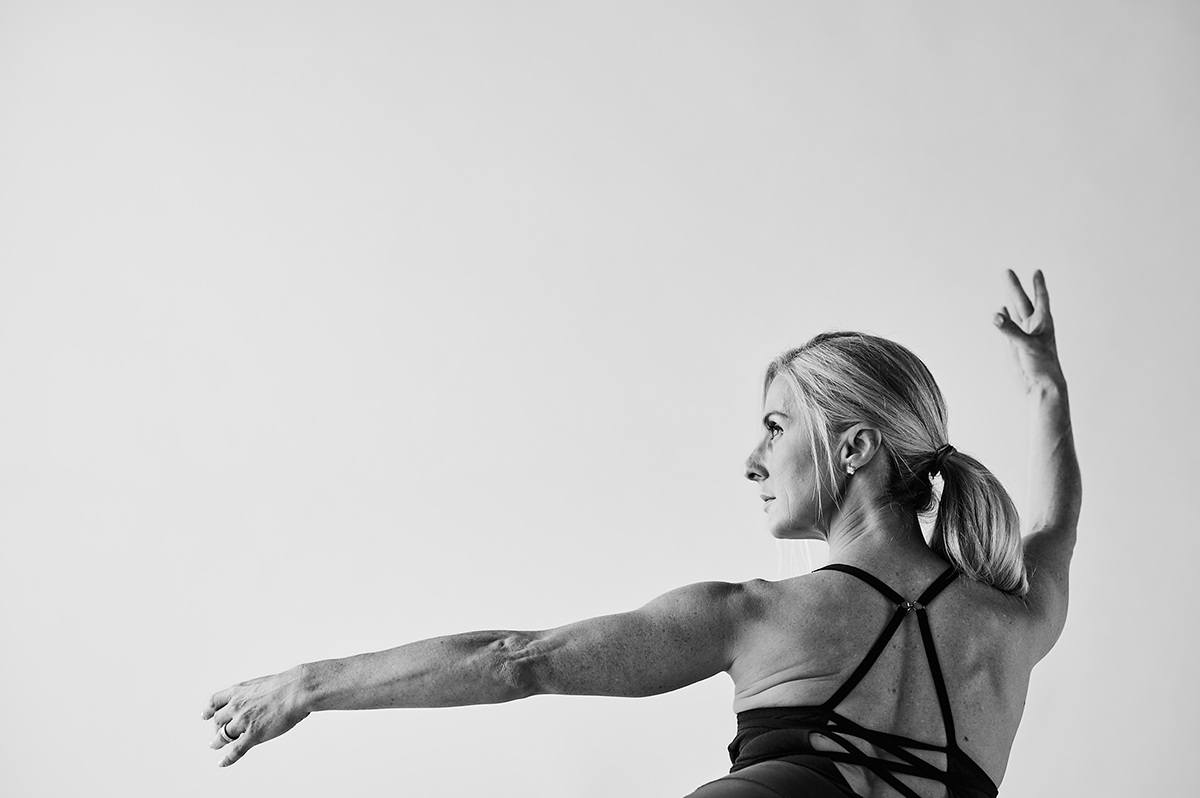New clients! For a limited time, Get 13 Classes for $78 (only $6 per class)
A Bar Method Story: How Bar Method Client Lisa Perseveres Through Psoriatic Arthritis
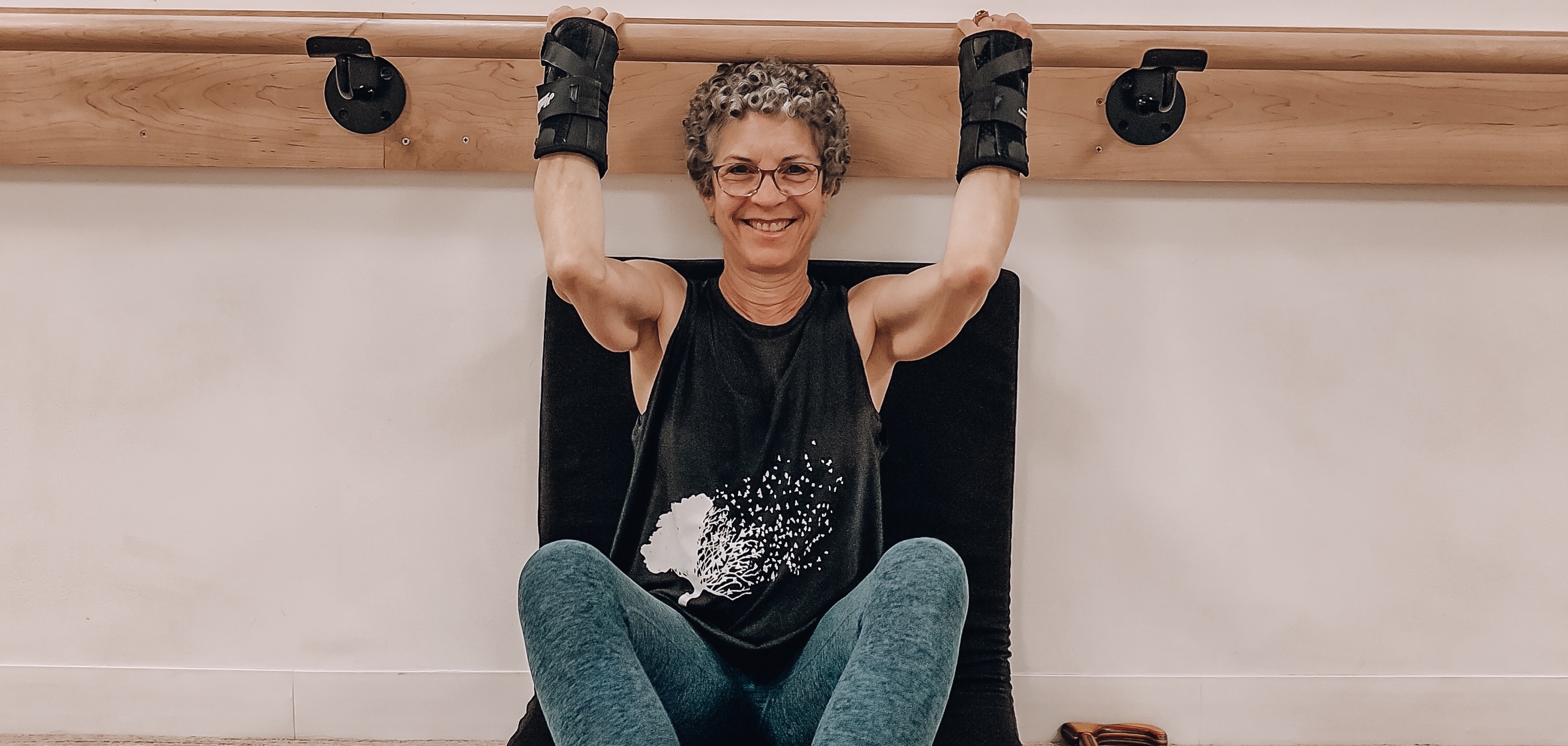
I might say I’m a lot of things: Curly girl. Knitting enthusiast. Cookie artiste. Musical theatre devotee. But here are a few things I’m not:
I am not defined by my work, weight, clothes, past mistakes, what others think of me, or my medical conditions.
I am not over 60… I like to say I’m $59.95 + shipping & handling.
And I am not disabled… although if pressed, will concede to “differently abled.”
I understand others could very well see me that way — given the obvious context clues of a cane, hand braces, uneven gait, and the grimaces accompanying ever-present pain.
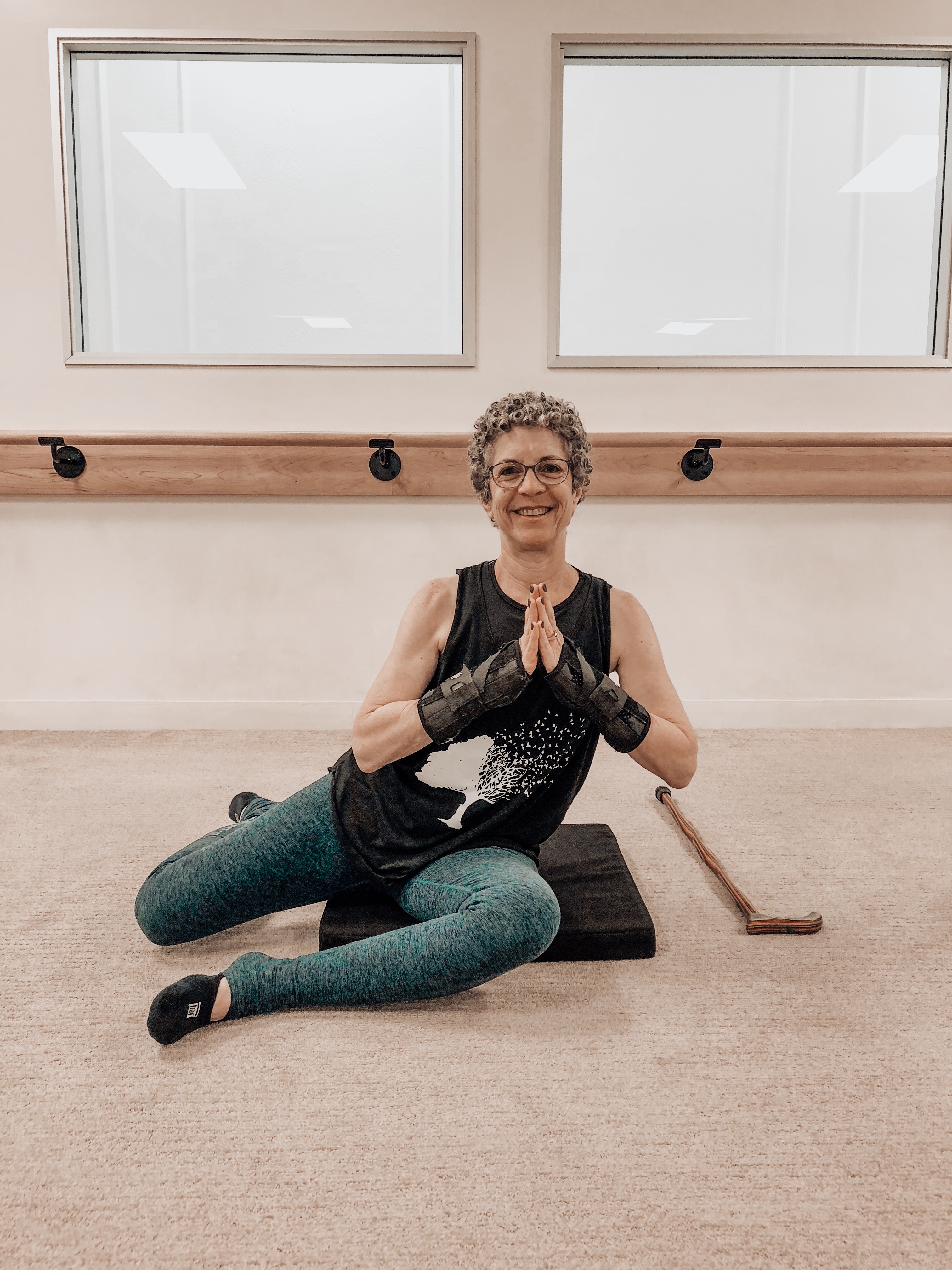
“Medical conditions?” you ask. I’ve got a few: Asthma, Addison’s Disease, and Psoriatic Arthritis, or PsA. Yup, still working my way through the A’s… Thankfully, the first two are easily controlled with medications: better living through chemistry!
However, the PsA diagnosis in early 2010 was devastating: I had to forego cycling classes, weight training, Pilates reformer, and more. Within six months, I required a cane to stay balanced as I endured increasing chronic pain. PsA is an inflammatory disease causing pain and stiffness in the connective tissues. Wondering what that feels like? Imagine tendonitis in all joints… simultaneously!
Any change in ability — whether through disease, injury, weight challenges, emotional issues, or even wanted situations such as pregnancy — may bring with it self-doubt, insecurity, or anxiety, especially when it comes to exercise. Bar Method was key to my overcoming these feelings.
Along with drugs and lifestyle adjustments, exercise is crucial in delaying PsA damage. For years, I settled for basic physical therapy-type stretching and range-of-motion work with a personal trainer. Effective? Absolutely. Repetitive? You bet. Isolating? Indeed. Enjoyable? Meh. Let’s just say I desperately craved more challenge, more sociability, more variety, more fun.
In May 2016, I chanced upon Fremont Bar Method “community” classes in a temporary venue close to home, while a new studio was under construction. I’d heard of the barre concept, but this was its debut in my little corner of suburbia. Previous experience with both Pilates and dance — coupled with years of gym attendance and my characteristic overconfidence — led me to assume I could handle this. I was right: one class and I was hooked! Since the Fremont studio opened in January, 2017, I’ve attended classes 5-6 times per week.
What keeps me coming back?
- Visible flexibility and strength improvements
- Constant challenge
- A cushy floor mat and supportive bar that everyone else also uses, so I’m not “different”
- Genuine encouragement, support, and camaraderie, thanks to instructors and classmates
- Musical variety: I enjoy the current stuff, but nothing improves my day like hearing the opening notes of the Disco, Boy Band, or Classic Rock sets!
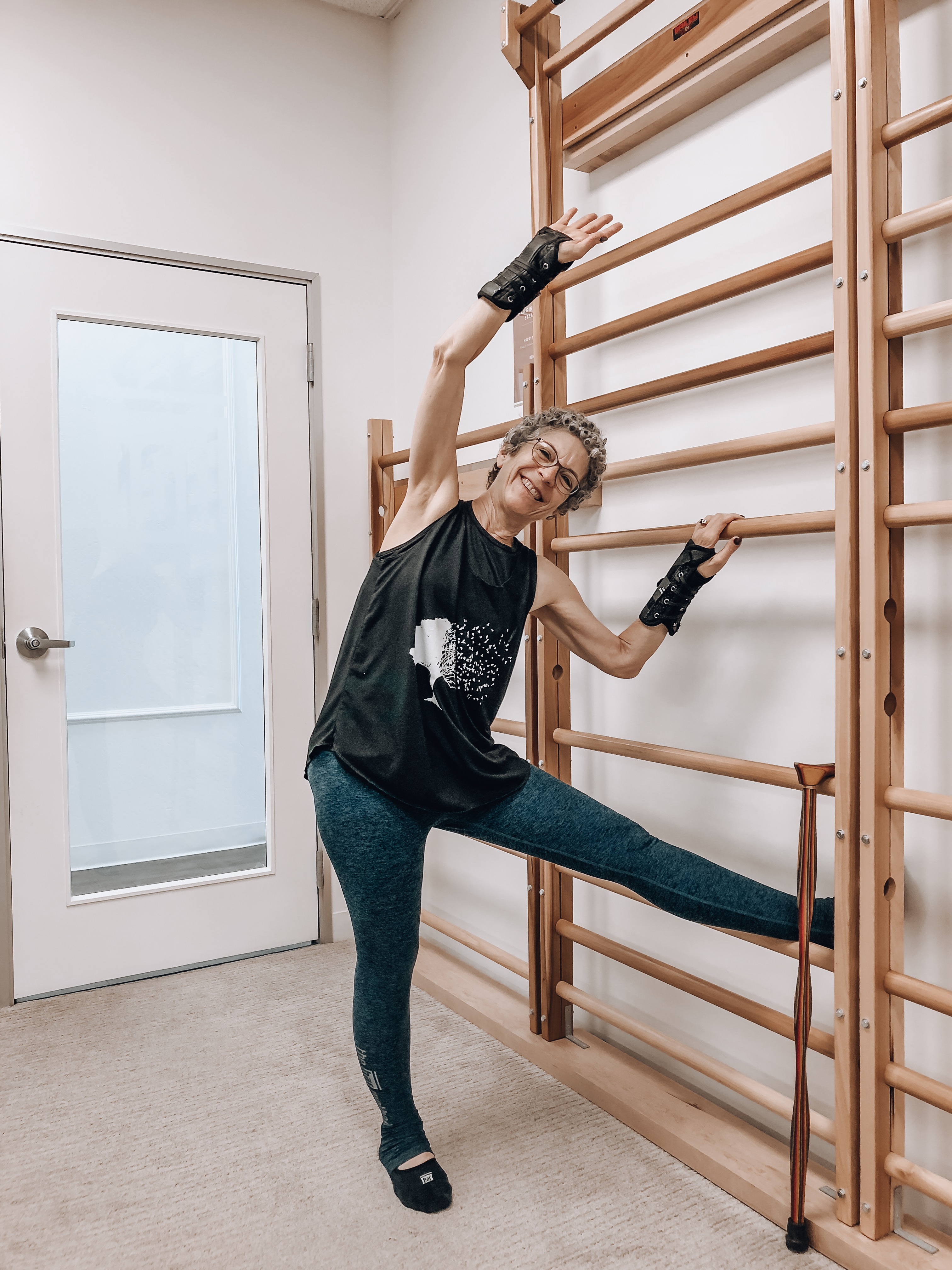
Thinking that you don’t have what it takes to make it through a class if you’re dealing with “different ability” or chronic pain? Consider my strategies for getting through class successfully, each and every time:
Optimize class time selection… and schedule far ahead
I prioritize attending morning classes, knowing my fatigue level is lowest then, and book classes several weeks ahead, to make sure I’m not locked out. Having it on my calendar means I won’t schedule something else at that time.
Know your place… and plan your space
I arrive early to stake out my spot. My constraints:
- Near the back-of-studio bar to hold on for warm-up leg lifts, and whenever changing positions to the floor
- Near the stall bar so I’m not trekking across the studio
- Close enough to the center that I don’t have to go far to get my mat, riser, and mini-mats
In addition, I’ve got that pesky cane to deal with. I know where best to place it for each exercise, which usually means moving it multiple times during class.
Get your props… and then give yourself props
I gather extra props early (including the strap I use for Round Back) to avoid picking up my cane to walk mid-class when possible.
I work hardest on the few areas where I know I have strength, such as core work, and push myself hardest to take the challenge options there. I will never lift highest on Seat, or drop lowest on Thigh. But I can lift my feet in Flat Back, and that’s a source of pride, each and every time!
Embrace the modifications
Given the wrist braces, push-ups were pushed up and out of my life eons ago. But planks are perfectly possible, so I have twice as many opportunities to perfect my form. Knowing that there are modifications to just about every move really bolstered my confidence from the get-go.
Be generous with permission and forgiveness
I grant myself permission to take it easy on high-fatigue or high-pain days — and readily forgive myself on days where I struggle. A bad sacroiliac spell last year had me sidelined for a week. I allowed myself a one-day pity wallow, and then quickly shifted to taking the best possible care of myself so I could get back to the studio, pronto.
Take your time, but keep pushing
With any new exercise, no matter your ability level, it’s never a bad idea to start slowly and gradually increase your efforts — whether that means dropping an inch lower in Chair, or increasing weights by one pound. With every exercise, accomplishing a fraction more than before gives me confidence and keeps me motivated.
And finally… practice gratitude
I’m beyond grateful to have discovered and embraced a fitness routine that allows me to shine where possible, and cope with the physical challenges thrown my way — all in the presence of like-minded, enthusiastic companions. Joining Bar Method Fremont created a profound difference in my everyday enjoyment of life, and I can’t wait to get back there each day!

